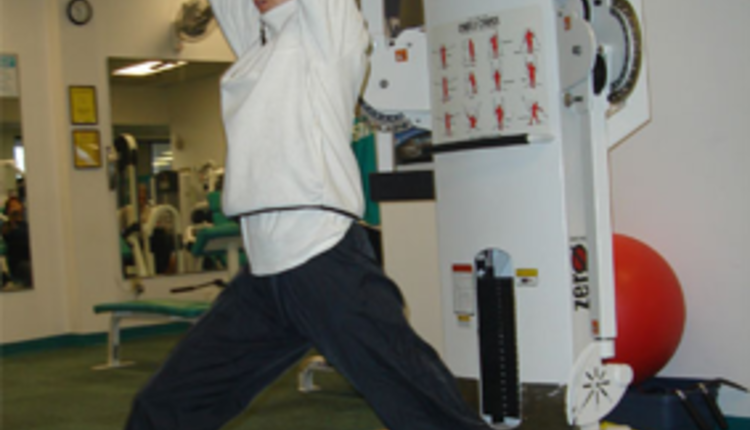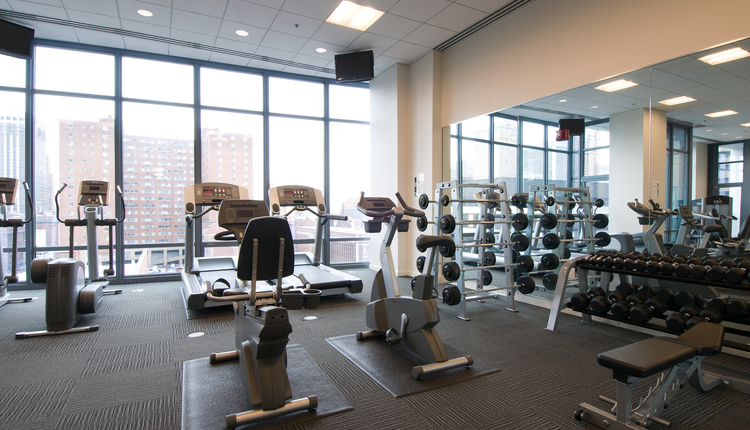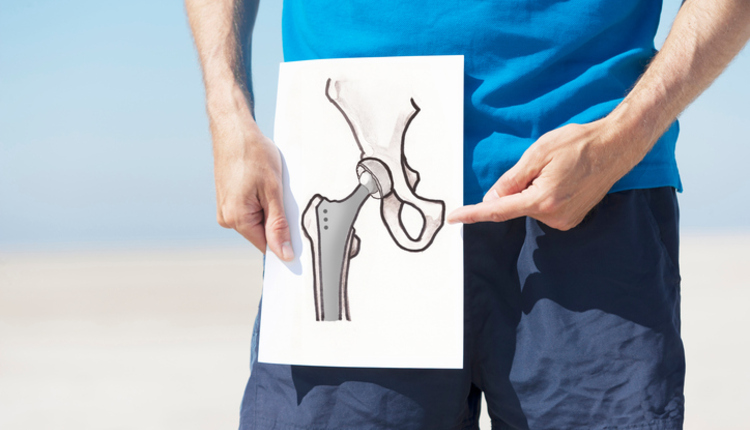
If you're already familiar withtraining older adults, you know that special considerations need to be takenand program adjustments need to me made. If you're not yet familiar with theneeds of this population, you need to be. Osteoarthritis(OA), the mostcommon form of arthritis, has become a potentially devastating joint disease,affecting some 27 million adults per year. TheCenters for Disease Control and Prevention (CDC) estimates that in 2005,self-reported arthritis or other chronic joint symptoms affected approximately21.4 million Americans aged 65 years and older. This estimate is expected toreach 41.1 million by 2030, at which time individuals aged 65 years and olderare expected to comprise 20% of the US population.10
What is Osteoarthritis?
Osteoarthritistypically occurs in the hands, knees, spine and hips affecting a multitude ofjoints.Those affected with OA will typically complain of symptoms ofstiffness, low-grade inflammation and pain. This stiffness and pain are mostprevalent in the morning which improves with activity and as the dayprogresses. In the evening, stiffness and pain returns.1 Osteoarthritismakes simple movements and activities of daily life painful and difficult toperform.
Thecause of OA involves a combination of mechanical, cellular and biochemicalchanges. The processes involves changes in the composition and mechanicalproperties of the articular cartilage. Cartilage is comprised of water,collagen and proteoglycans, In healthy cartilage, there is continual remodelingthat occurs as chrondocytes(cartilaginous cells) replace macromolecules thatare lost through degradation. In osteoarthritis, this process is disruptedleading to degenerative changes and abnormal repair response. 2
Despite increasing awareness ofthe negative effects of obesity on health and OA in particular, the prevalenceof individuals who are overweight or obese is increasing. Data from theNational Health and Nutrition Examination Survey (NHANES) collected between1999 and 2000 show that 64.5% of the US population is overweight, including30.5% classified as obese. Men and women aged 60 to 74 years had the highestprevalence of obesity, accounting for 36% and 40% of all obese subjects,respectively.10 Carrying extra weight places increased stress and forceon the weight-bearing joints. Other common riskfactors include joint injury, mechanical stress, history of immobilization andtrauma.
Arthritis treatment first begins with education. Treatment forosteoarthritis can help relieve pain and stiffness, however the condition canprogress. Physicians will tend to focus to help those afflicted with OA byhelping patients manage their pain. The first commonly used approach ispharmacologic intervention. Traditional non-steroidal anti-inflammatory drugs(NSAIDs) havebeen shown to be effective for OA pain, and are perceived as second-line drugsfor the treatment of mild to moderate OA.
Various forms ofsurgery are available when conservative management is ineffective. Oneprocedure is called a synovectomy. Synovectomy is the removal of damagedconnective tissue lining a joint cavity and it reduces joint swelling, pain,and ongoing damage to the joint. If arthritis pain and inflammation becometruly unbearable, affecting all aspects of function, joint replacement surgeryor knee replacement is usually the last option.
Physical therapy is also very effective in helping thosesuffering with OA. The focus of therapy should be on helping the patient byimproving their muscle flexibility, joint mobility and strengthening the weakerhip musculature, resulting in improved mobility, function, decrease pain andimproved quality of life.
Other Types of Arthritis
Rheumatoid arthritis(RA) is a systemic inflammatory disorder that mainlyaffects the hands. It is the most common form of inflammatory arthritis, andhas a substantial societal effect in terms of cost, disability and lost productivity.The disease can occur at any age but it is most common among those aged 40-70years. The predominant symptoms are pain, stiffness and swelling of peripheraljoints. The clinical course of the disorder is extremely variable, ranging frommild, self-limiting arthritis to rapid.1Juvenile rheumatoid arthritis is a subcategory ofRA where prevalence of the different subtypes of JRAvaries among different geographic and ethnic groups.6
The management of rheumatoid arthritis (RA) has changedsubstantially over recent years. The emphases are now on early recognition ofpersistent synovitis(inflammation of the synovial sheath) in primary care, andprompt use of disease-modifying anti-rheumatic drugs (DMARDs).8 Medically, the introduction oflow-dose weekly methotrexate as monotherapy for rheumatoid arthritis providedan incremental improvement in tolerability for many patients. Physical therapyshould be considered, as the earlier the sign and symptoms are recognized, thebetter the prognosis.
Avoid excessive load-bearing exercises on clients'joints, particularly wrists and hands. Design a program that is simple,utilizing machines, incorporating physioball training, aqua therapy andcarefully monitoring form and fatigue levels.
Ankylosing Spondylitis (AS) is defined as a chronicinflammatory rheumatic disease usually affecting young adults affecting theaxial skeleton. Causing characteristic inflammatory back pain. The cause isunknown, however, there is thought to be a strong genetic link to its etiology.Commonly affecting the sacroiliac joint(SI) and the spine initially. AS affectsmen & women <40 years of age, who will complain with morning stiffnessand difficulty sitting, standing and prolonged activities. 7
The treatment of AS is tailored to the individualpatient. The primary goal is to relieve pain, reduce inflammation and maintaingood posture and function. Physiotherapy plays a major role in the long-termmanagement of ankylosing spondylitis. Make sure to give patients an insightinto why certain exercises are of most value. 9
When training clients with AS, it is importantcommunicate with the client's physician and physical therapist. Exerciseimproves the quality of life with those with AS. The focus of training shouldbe simple exercises that avoid axial loading(ie. shoulder press/squatting).Program design should emphasize on low volume, adequate rest periods,structural exercises, aqua therapy and gentle stretching.
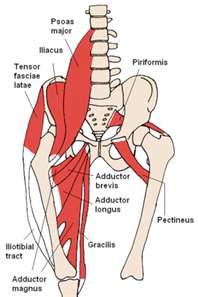 Figure 1: Anterior muscles of the hip complex | 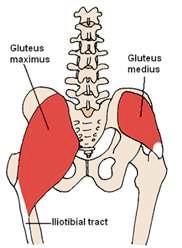 Figure 2: Posterior muscles of the hip complex |
Training Recommendations
From acardiovascular perspective, a program should be tailored to the client and canbe very effective in many ways; assisting with improving mobility, reducingblood pressure/heart rate and aiding in weight loss. If your client is juststarting out, a recumbent bike is a great starting point to reduce the load tothe hips and knee, followed by progression to an elliptical machine. This willnot only help the thigh musculature but work on moving the stiff upper back.Stretching the tight(postural) hip flexors and quadriceps (see Figure 1)will reduce the load to the knee joint.
Yoga can alsobe an effective intervention to improve flexibility, balance, strength and bodyawareness. Strength training should focus on targeting the weaker phasicmuscles; glute maximus, glute medius/minimus (as seen in Figure 2). Thesemuscles are necessary for everyday movements such as arising from a chair,climbing stairs, negotiating uneven surfaces.
Strengtheningthe core begins with simple exercises such as bridging with the ball(figure 3),targeting glute maximus, hamstrings and the lower back musculature, which challengethe client to use the lumbo-pelvic muscles as a unit. This can be progressed tohaving the client hold longer or to perform a single leg bridge.
Functionalstrengthening exercises such as reverse lunges holding a medicine ball that canbe progress to either holding overhead or adding trunk rotation will do twothings. First, strengthen the weaker muscles in a functional patter because wedon't always move in one plane. It will also improve balance and stability,which is something again with age, decreases. Paying particular attention toform monitoring their technique is vital for successful outcomes(Figure 4 and 5).
 Figure 3: Bridging with ball | 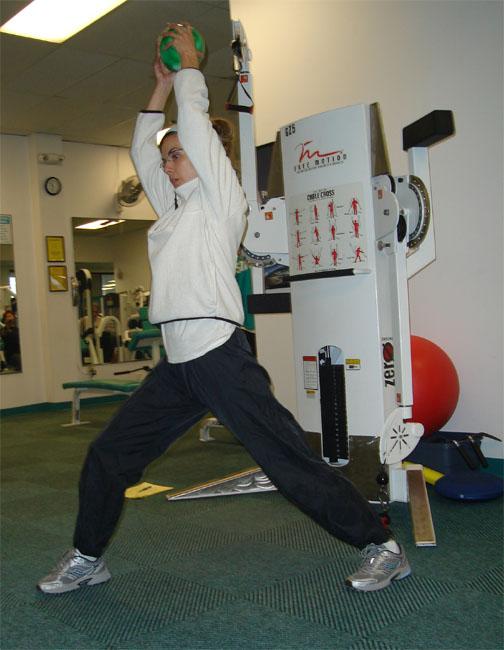 Figure 4: Reverse lunge with trunk rotation with wood chop | 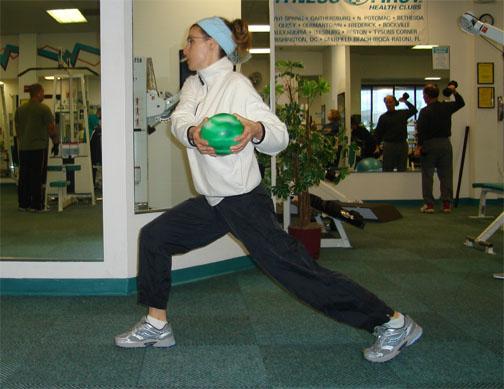 Figure 5: Diagonal lunge with medicine ball |
The use of aqua therapy can also be effectivewhich eliminates gravity resulting in a client's ability to strengthen theirlower body in a relaxed environment.
Arthritis continues to affect many individuals for various reasons. Knowledge, prevention and early screening is fundamental. Understanding the pathological process and medical approach is the first step in helping your clients with OA. Refreshing yourself on anatomy, biomechanics and understanding proper exercise prescription is fundamental. Any exercise program should be individualized resulting in improved function, strength gains, weight loss and a client that will be truly appreciative of your comprehensive approach. This is the cornerstone of effective and optimal training.
Chris Gellert, PT, MPT,CSCS, CPT is the President of Pinnacle Training & Consulting Systems, LLC, aconsulting and education company that is committed tocreating and providing evidenced basededucational material in the form of home study courses, dynamic liveseminars, mini-books, DVDs on the areas of; human movement, fitness andrehabilitation with unique practical application. Chris has over 11 years clinical experience having worked with primarilyorthopedic patients, spinal injuries, post-surgical conditions, traumatic andsport specific injuries and 15+ years as a personal trainer. As uniquely both an experienced physicaltherapist and certified personal trainer, a national fitness presenter,consultant, he continues to teach seminars on Human Movement, write for variouspublications and websites, and ispresently pursuing postgraduate studies in physical therapy while studying inAustralia. For more information, please visit www.pinnacle-tcs.com.
References
2 Hinton et al. Osteoarthritis: Diagnosis and Therapeutic Considerations. Journal of American Family Physician. 65(5) Pgs: 841-849. 2002.
3 Weinblatt ME, Maier AL, Fraser PA, Coblyn JS. Long-term prospective study of methotrexate in rheumatoid arthritis: conclusion after 132 months of therapy. Journal of Rheumatology. 25: pp: 238-42. 1998.
4 Kremer JM. Safety, efficacy, and mortality in a long-term cohort of patients with rheumatoid arthritis taking methotrexate: follow-up after a mean of 13-3 years. Arthritis Rheumatology. 40: pp: 984-85. 1997.
5 Tugwell P, Wells G, Strand V, et al. Clinical improvement as reflected in measures of function and health-related quality of life following treatment with leflunomide compared with methotrexate in patients with rheumatoid arthritis: sensitivity and relative efficiency to detect a treatment effect in a twelve-month, placebo-controlled trial. Arthritis Rheum. 43: pp: 506-14. 2000.
6 Schneider, Rayfel. Et al. Rheumatology Disorders Clinics of North America. 28. pp: 503-530. 2002.
7 Braun, Jurgen et al. Ankylosing Spondylitis. The Lancet. 369, 9570; Research Library. pp. 1379. 2007.
8 Ding, T., Deighton, C. Management of Rheumatoid Arthritis. Journal of Medicine. Volume 38. Issue 4. 2009. pp: 172-1769.
9 Calin, A. Ankylosing Spondylitis. Journal of Medicine. Volume 34. Number 10. pp: 396-399. 2006.
10 Litman, D. Maximizing Success in Osteoarthritic Care: Benefits of a comprehensive Management Approach. Internet Journal of Rheumatology. Volume 5. Issue 2. pp: 1-2. 2008.



